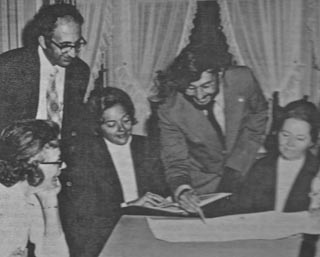About The Landmark Society

Left to right are: Anna Hilton, Mayor Calale, Gretchen Abbott, Steven Levy, and Mary Lou Mason.
The beginning
In the spring of 1972, a small group of Homer residents organized the Landmark Society of Cortland County. The name was chosen because, although our immediate focus was on the village of Homer, there was not a broad interest in historic preservation of the many early structures still in existence in the County at that time.
We felt obliged to take on the role of protecting those landmarks as well. Fortunately, historic preservation caught on and others stepped forward in many of those communities to take on the task and enable us to concentrate our energies and resources on the village of Homer, NY.
With the blessings of the village, appropriation from Title 701, the invaluable aid of the Cortland County Historical Society, Professor Stephen Jacobs of Cornell University, and the guidance of the New York State Board for Historic Preservation, the society launched its survey. Within the year photographic documentation was completed and historic and architectural data compiled.

The task ahead
The establishment of a historic district is only the beginning. The preservation of Homer’s remarkable heritage is the challenging task ahead. Its streets retain the echo of many lives over many generations that have gone before. It gives us roots – a sense of time and place.
Homer’s unique physical character derives from its small-town rural atmosphere, its broad, charming tree-lined streets its rich and varied collection of 19th century homes its relatively unspoiled Victorian business district and its picturesque village green, which serves as the hub for cultural, educational and religious activities.
We must all serve as custodians of these cultural, aesthetic, and environmental gifts from our forebears – to protect them from misuse, neglect, and demolition; to restore and, when necessary, adapt and beautify them; and to safeguard them with municipal ordinances when appropriate.
It is our hope for the Landmark Society to continue to serve as a resource to both villagers and business owners in their appreciation of the historic setting in which we find ourselves and its potential for the future. The objective is not the freezing of the status quo or the creation of an inflexible museum environment, but a historically sensitive adaptation of our unique and beautiful community heritage to the requirements of life in the 21st century.


